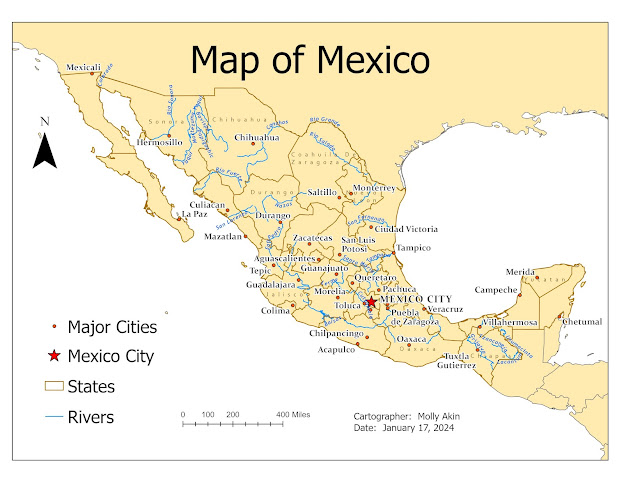For Module 5 (Analytical Data), we processed various data sets and created infographics using various programs (ArcGIS, Microsoft Word, Microsoft Excel). This was one of my favorite assignments in this class so far! We were provided with a data set called the "2018 County Health Ratings National Data", which had various annual statistics. I chose to compare the two variables, "Percentage of Single Parent Households" and "Percentage of Children in Poverty". I initially wanted to use the "Violent Crime" category with another variable for this lab but realized that the statistics provided were in "indices" rather than percentages. I settled on child poverty rates and single parent homes because both had a normalized variable using an overall percentage (per county/state).
With regard to map design, I was struggling with the requirement to put so many things (infographic, bar chart, scatterplot, 2 maps, etc) on the same page, but I think I made it work. I made many changes once I started to add all of the components to the map. Some of the original bar charts I created didn't fit well on the page, so I changed the graph orientation. I changed the colors of some of the other graphs so it matched the other graphs as well. One item of note: I located supporting statistics on The Annie B. Casey Foundation website, but could not find the 2018 data set so I used the 2019 statistics instead.
















